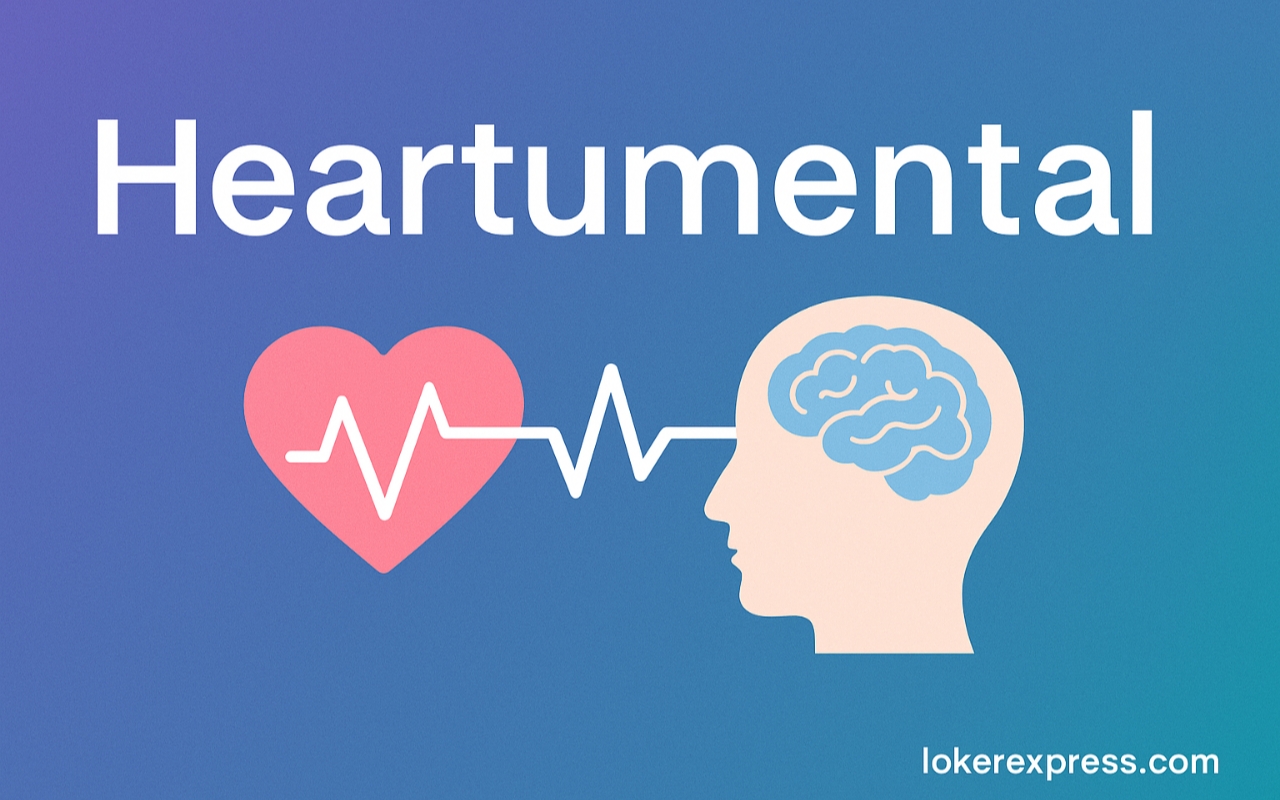Understanding Heartumental: A New Era of Holistic Wellness
In an age where mental health and emotional well-being are finally receiving the attention they deserve, a new concept is emerging on the horizon—Heartumental. A blend of the words “heart” and “mental,” this term represents a holistic approach to life, wellness, and self-development. Unlike traditional methods that isolate mental processes from emotional states, the Heartumental philosophy encourages a synchronized balance between logic and feeling, mind and heart, thought and emotion. It’s about recognizing that mental clarity cannot exist without emotional understanding, and vice versa.
Heartumental doesn’t simply refer to a feeling or a mindset—it’s a lifestyle. It calls for conscious living where empathy, self-awareness, emotional intelligence, and rational thought coexist and thrive. With rising global stress levels, burnout, and anxiety disorders, understanding Heartumental principles could be the key to not just surviving, but thriving.
The Core Philosophy Behind Heartumental
At the heart of the Heartumental concept lies the belief that emotional intelligence and cognitive clarity must walk hand-in-hand. Emotional distress often clouds mental judgment, while excessive logic devoid of empathy can lead to isolation and emotional burnout. Heartumental seeks to integrate these two forces into a unified, balanced state.
This approach views the human experience as an intertwined process where the heart guides the emotions, and the mind organizes those emotions into constructive action. It doesn’t demand the suppression of emotions nor the dominance of logic—it promotes their cooperation.
This philosophy challenges the outdated dichotomy of “emotion vs. reason.” Instead, it advocates for emotional reasoning—the kind that understands feelings not as irrational, but as essential data points that help inform better mental outcomes.
Emotional Intelligence: The Heart in Heartumental
A foundational pillar of the Heartumental mindset is emotional intelligence (EQ). This involves recognizing, managing, and appropriately expressing emotions—both your own and those of others. EQ is more than just being “in touch with your feelings.” It’s about using that emotional awareness to guide behaviors, improve relationships, and foster inner peace.
According to psychologist Daniel Goleman, EQ includes five core components:
- Self-awareness
- Self-regulation
- Motivation
- Empathy
- Social skills
These are not just tools for interpersonal communication—they are mechanisms through which we create internal harmony. In the Heartumental model, EQ isn’t optional—it’s central. High EQ means greater resilience, stronger mental health, and deeper connection with one’s life purpose.
Mental Clarity and Cognitive Wellness
While the heart governs emotion, the mind organizes thought, calculates decisions, and navigates complex information. But in a world of sensory overload and constant stimulation, mental clarity is harder to achieve. This is where the mental aspect of Heartumental becomes crucial.
Mental clarity involves:
- The ability to focus without distraction
- Making decisions with confidence
- Prioritizing tasks effectively
- Thinking with purpose and direction
Practices such as meditation, mindfulness, journaling, therapy, and digital detoxing play a pivotal role in achieving this clarity. When practiced consistently, these tools don’t just calm the mind—they open up emotional pathways as well, reinforcing the Heartumental balance.
How Heartumental Differs from Traditional Self-Help Models
Most self-help approaches tend to lean heavily in one direction—either deeply emotional or coldly rational. For example, some therapeutic models focus purely on cognitive restructuring (like CBT), while others emphasize unburdening emotions (like Gestalt or psychodynamic therapy). While effective, these isolated approaches often fail to address the intersection between feeling and thinking.
Heartumental bridges that gap. It doesn’t ask you to choose between heart and mind. Instead, it invites you to explore how each influences the other. The result? You become more emotionally grounded and mentally equipped to handle life’s complexities.
Daily Practices to Cultivate a Heartumental Life
Living heartumentally requires more than belief—it requires intentional action. Here are a few practical steps you can take to begin incorporating this mindset into your daily life:
1. Morning Emotional Check-ins
Start each day by asking yourself, “How do I feel today?” and “Why do I feel this way?” This builds emotional awareness and helps you navigate your day mindfully.
2. Thought Journaling
Write down your thoughts throughout the day. Over time, you’ll notice patterns—emotional triggers, recurring worries, and areas where logic might be clouding your compassion.
3. Heart-Centered Meditation
Unlike traditional meditation, this involves visualizing the heart as a source of strength and clarity, not just the mind. Breathe into your chest, not just your brain.
4. Emotional Boundaries
Learn to say no, not from a place of anger, but from a space of emotional clarity. Recognize that protecting your energy is an act of mental hygiene.
5. Thoughtful Conversations
Engage in dialogue that goes beyond surface talk. Ask meaningful questions. Listen without judgment. Connect through shared emotion and thoughtful exchange.
The Role of Heartumental Thinking in Relationships
Relationships—whether romantic, familial, or professional—are a true test of Heartumental integrity. Miscommunications often arise when one person operates emotionally while the other responds logically, creating emotional dissonance.
Heartumental relationships encourage:
- Active listening over reactive talking
- Empathetic confrontation rather than aggressive argument
- Mutual validation, where both emotional concerns and rational arguments are honored
This doesn’t mean conflict disappears—it means conflict resolution becomes more constructive. You’re not just reacting; you’re responding with both your heart and your head.
Challenges to a Heartumental Life
Let’s be honest: living a heartumental life isn’t easy. Society often rewards logic over emotion, productivity over introspection, and competition over compassion. There are hurdles:
- Cultural stigmas around vulnerability
- Mental fatigue from overstimulation
- Personal trauma that blocks emotional access
- Bias toward rational superiority
But here’s the good news: Heartumental thinking doesn’t require perfection. It demands presence. Every step toward emotional-mindful integration is progress. You don’t need to suppress your logic or drown in emotion—you simply need to build a bridge between them.
Why Heartumental Is the Future of Mental Health
The world is slowly waking up to the reality that emotional and mental health are two sides of the same coin. Mental health professionals are now integrating emotional processing techniques with traditional therapies. Life coaches and wellness experts emphasize emotional literacy. Even workplaces are starting to value psychological safety and mental wellness.
The Heartumental approach aligns perfectly with this shift. It offers a roadmap for people who want to live more whole, aware, and connected lives. It invites us to become architects of our emotional and mental landscapes—not through separation, but through synthesis.
Read More: Loguytren Problems: Understanding the Causes, Symptoms, and Treatments
Final Thoughts: Embrace the Heart, Empower the Mind
In a world divided between heart-led dreamers and logic-driven thinkers, the Heartumental mindset acts as a unifying force. It empowers us to be both intuitive and intelligent, soft yet strong, grounded in reason but lifted by emotion.
Whether you’re a therapist, a student, an entrepreneur, a parent, or simply someone navigating the chaos of modern life—Heartumental is for you. It’s not just a buzzword. It’s a framework. A foundation. A new lens through which to see yourself, your relationships, and the world.
To live heartumentally is to live consciously—with a heart that listens and a mind that understands.

